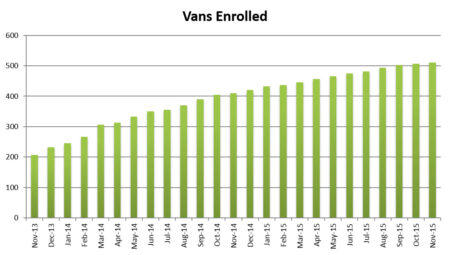Transportation Demand Management (TDM) is a somewhat daunting term that refers to the practice of promoting the use of public transportation and ridesharing options through marketing and education directed at the general public and employers.
Traditional TDM strategies include strategies such as providing public transit incentives, encouraging and assisting employers with implementing transit benefit programs, providing bike and walk safety education and outreach, and marketing public transportation and other all non-drive alone options to all audiences. TDM agencies have been at the forefront of launching and promoting new public transportation innovations, most recently shared-use mobility options, including bikesharing and carsharing.

Contrary to popular belief public transportation options do not always “sell themselves” – even in the most urban areas. The District of Columbia is rich with public transportation options; a subway system, regional and local bus systems, a regional bikeshare system, and more car and ridesharing companies than can be easily counted, and yet around a third of District of Columbia residents still drive alone to work.[1] This is compounded by the fact that only 27 percent of individuals who work in the District of Columbia also live there.[2] While it would be nice for more people to be able to live where they work, the high cost of living, the fact that many dual-income households mean couples are traveling to work in different areas of the region, and that many workers change jobs every few years means that living where one works isn’t always possible. While planning for transit-supportive land uses and introducing new options (Hello Metrorail Silver Line!) are important strategies for increasing public transportation use, there remains lots of unused capacity on our existing public transportation systems, and this is where TDM comes in! As one of our former clients, Chris Hamilton, former Bureau Chief of Arlington County Commuter Services, puts it, TDM is the software that makes the hardware, Transit, work.
TDM programs have a big impact on the use of public transportation, biking, walking, and sharing the ride every day. Arlington County Commuter Service’s program, with whom we’ve worked with since 2008 on program development and performance measurement, took over 41,000 trips off the road in FY2014 alone. Foursquare ITP was very proud to develop the business plan for Northern Virginia’s Vanpool Alliance, a public-private partnership to grow vanpooling in Northern Virginia. For the first six months of operation in 2012, the program earned the region $1.8 million in federal funds–more than initially anticipated due to new federal funding sources. From November 2013 to November 2015, van enrollment has more than doubled, demonstrating the immense popularity of the program.

At its heart, TDM is about facilitating behavior change. Converting someone who has always driven alone to work or who has limited experience with transit into a transit user, and someone who thinks more broadly about their transportation options isn’t easy. Foursquare ITP has worked with TDM programs in exurban, suburban, and highly urban locations to develop TDM strategies aimed at the specific challenges facing individual communities. In the I-66 Outside the Beltway study we’re facilitating the development of a range of TDM options designed to incentivize and market the use of the public transportation and ridesharing services that will run on the new managed lanes facility on I-66, in an area where few commuters are using transit today.
TDM is currently in the midst of a golden age of innovation. New technologies, such as real-time public transportation and bikeshare display provider Transit Screen and numerous privately developed smartphone applications, are changing the way people get information and decide on how to get from point A to point B. Dynamic ridesharing, once only present as “slugging” in Northern Virginia, is becoming more widespread as it is enabled by transportation network companies and other private dynamic ridesharing services. In an on-demand, sharing economy, TDM is poised to play an ever larger role in our transportation future. Our firm is very excited to work with TDM agencies to integrate these new options and develop innovative and effective TDM strategies that maximize the use of today’s public transportation services and transportation infrastructure.
[1] U.S. Census Bureau, American Community Survey, 2014 5-year estimates.
[2] District Department of Transportation, moveDC.
Photo Credit: Arlington County Commuter Services
